Check out the Oct. 11 edition of What's Trending in Aerospace, where editors and contributors for Avionics International bring you some of the latest headlines happening across the global aerospace industry.
Commercial
Supersonic Air Travel Takes Another Step Towards Independence
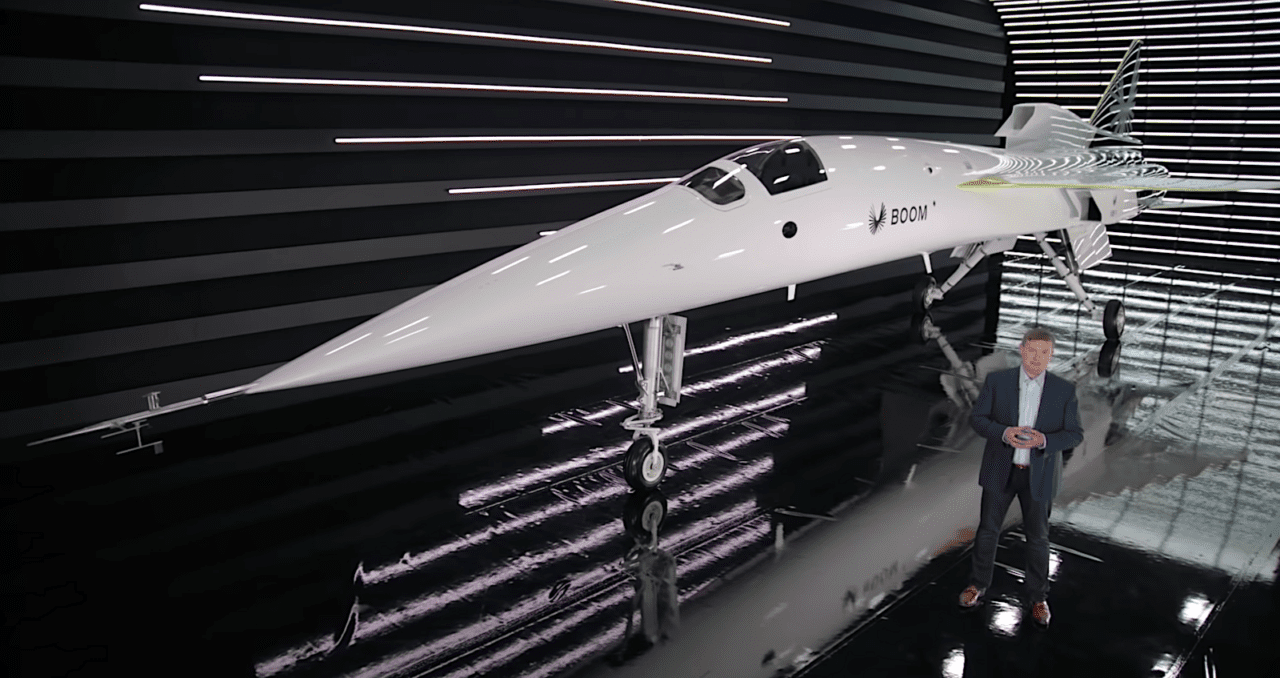
Boom Supersonic CEO Blake Scholl did an online rollout of the company's X-B1 demonstrator on Oct. 7. (Boom Supersonic)
Boom Supersonic, a commercial aerospace company, unveiled the XB-1, a supersonic demonstrator, according to an Oct. 7 press release. XB-1 is the first independently developed supersonic jet.
Built with a carbon-composite airframe and standing 71-feet-long, the XB-1 is designed for the stress of a supersonic flight. It uses three J85-15 General Electric engines producing 12,000 pounds of thrust.
"Boom continues to make progress towards our founding mission–making the world dramatically more accessible," Blake Scholl, Boom founder and CEO, said. "XB-1 is an important milestone towards the development of our commercial airliner, Overture, making sustainable supersonic flight mainstream and fostering human connection."
XB-1 will be tested in a 100 percent carbon-neutral flight program and is expected to fly in 2021.
Boom is developing a supersonic commercial jet, Overture, which is expected to roll out in 2025. XB-1 will demonstrate technologies that will be used for Overture. The Denver, Colorado-based company expects to start flight testing the XB-1 next year.
British Airways Last Boeing 747s Fly for the Last Time
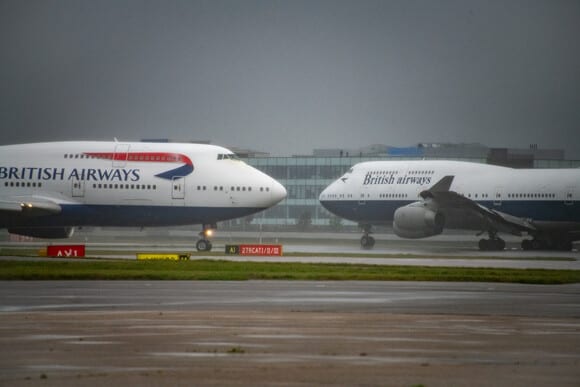
British Airways' remaining two Boeing 747 aircraft based at Heathrow taxied for take off for the last time on Oct. 8. (British Airways)
British Airways' remaining two Boeing 747 aircraft based at Heathrow taxied for take off for the last time on Oct. 8, according to a press release published by the airline.
To commemorate the occasion, the two aircraft took to the skies one after the other from runway 27R. Once in the air, G-CIVY circled back over the southerly runway in a farewell to its home before heading to St. Athan where the aircraft will be retired.
G-CIVB, painted in the airline's historic Negus livery and G-CIVY, in its current Chatham Dockyard livery, are going to be retiring in the UK at Kemble and St. Athan, respectively. Between the two aircraft they have flown 104 million miles in their 47 years of service.
Leonardo and ENAV Join Forces
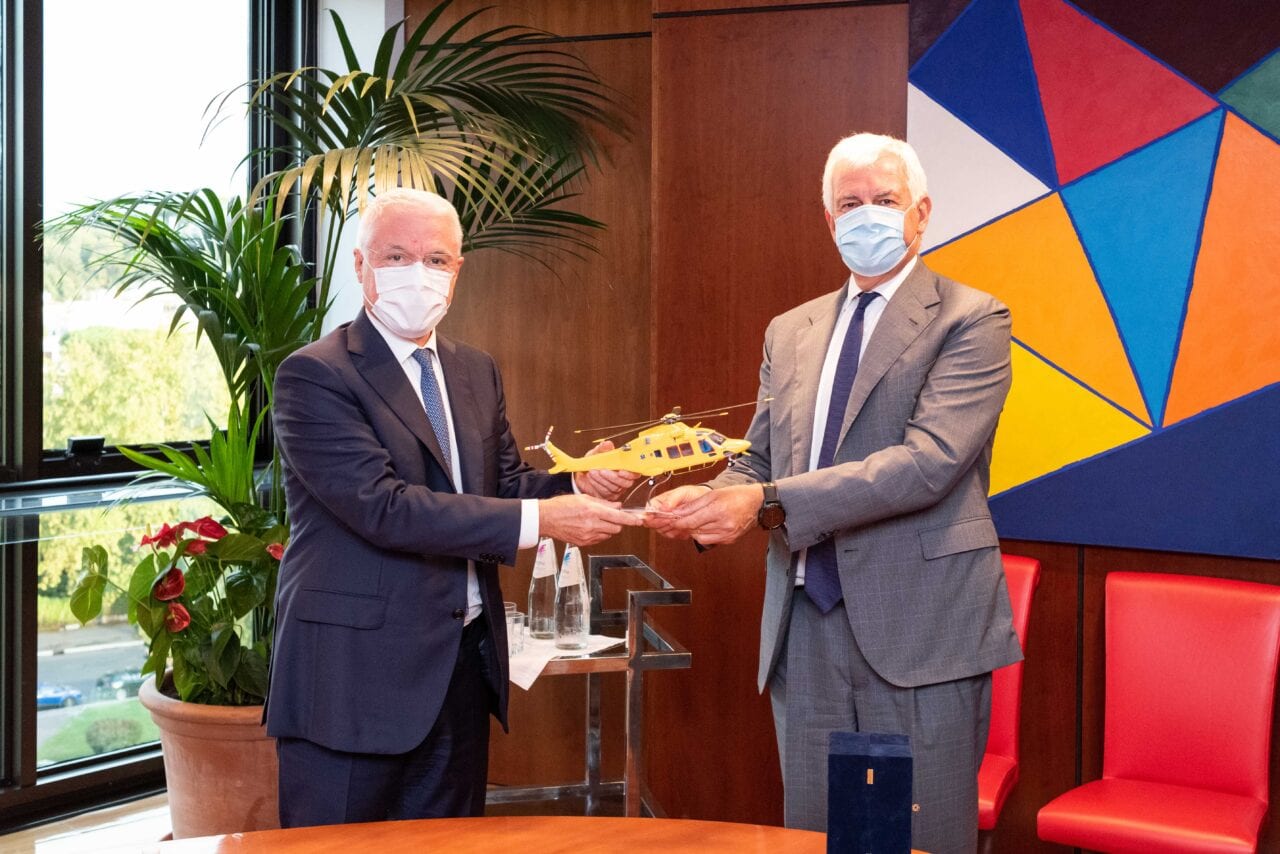
Leonardo and ENAV are partnering to bring helicopter operators products and services in the advanced navigation field. (Leonardo)
Italian aerospace and defense manufacturer Leonardo is partnering with Italy's air navigation service provider ENAV to bring helicopter operators products and services in the advanced instrument and navigation field, according to an Oct. 6 press release.
Both companies signed a Letter of Intent (LoI) in Italy. Leonardo and ENAV will use this partnership to develop solutions, procedures, and navigation standards for helicopter operations.
"With this initiative, we confirm our commitment to contribute to Italy's growth and competitiveness by strengthening a critical infrastructure like our sky as well as the systems and rules regulating its use," Alessandro Profumo, Chief Executive Officer of Leonardo, said in a statement. "We do this by introducing innovation, digitalization and procedures which will come closer and closer to the future ‘urban air mobility' scenarios, thanks to the continuous modernization in the field of integration with our expertise in helicopters and the relevant flight safety enabling technologies, air traffic control systems and space technologies. An integrated solution delivering benefits for mobility, safety, environment protection and services for the communities. Italy, with its industrial and technological excellence, confirms its contribution to the efforts made by Europe in this sector with programmes like SESAR and can become a benchmark at an international level."
Performance-Based Navigation (PBN) procedures, which are carried out by advanced satellite navigation, are used by both Leonardo and ENAV.
"We're proud of this agreement which shows aviation industry's ability to create synergies aimed at helping our sector grow and contributing to modernize systems which make flight more efficient and safer," Paolo Simioni, Chief Executive Officer of ENAV, said in a statement. "Airspace is a prime infrastructure for the Italian and international economy growth. Therefore, we're investing in technological innovation which must also be sustainable and support the environment. Leonardo and ENAV are two strategic players for the technological and infrastructural development of this sector and this partnership provides further evidence of the technological excellent and quality of ENAV's people. I'm confident that this collaboration will provide both partners with a competitive advantage in the international market."
CCX Technologies Expands to New Jersey
CCX Technologies is opening a new office in New Jersey to serve its U.S. customers, according to an Oct. 7 press release. CCX Technologies provides solutions for avionics OEMs and aircraft maintainers.
CCX Technologies will be able to use the National Institute of Standards and Technology (NIST) traceability to calibrate equipment such as the T-RX Avionics Radio and Pulse Tester. The new office will also provide a space for an advanced technology lab and serve as a hub for inventory management activities.
"We want to make it as easy as possible for our customers to get the support they need, whether it's for our cybersecurity solutions or T-RX Avionics Testers," Chris Bartlett, president of CCX Technologies, said in the release. "In this unprecedented period, where cross-border travel is difficult, establishing a local presence is an important step that will allow us to deliver the highest possible level of support to our growing U.S. customer base."
The new office is conveniently located at George Walker Field (KSMQ) in Bedminster. The location was chosen because of its proximity to the airport and access to aircraft.
Military
Elbit Systems Awarded $50M for ANVIS HUD
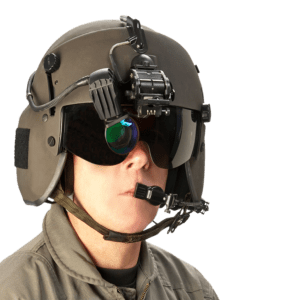
Army pilots use the ANVIS HUD system, which is a display that connects to the pilot's helmet. The display features altitude, speed, and heading. (Elbit Systems of America)
Elbit Systems of America was awarded a five-year firm-fixed-price, indefinite-delivery/indefinite-quantity (ID/IQ) award for the Aviators' Night Vision Imaging System/Head-Up Display system (ANVIS HUD), according to an Oct. 7 press release. The $50 million contract was awarded on behalf of the Army by the Defense Logistics Agency.
Army pilots use the ANVIS HUD system, which is a display that connects to the pilot's helmet. The display features altitude, speed, and heading. Allowing the pilot to see the display on their helmets prevents them from having to look down or inside the cockpit while flying.
Elbit Systems of America's displays are used on pilots' helmets in the UH-60, CH-47, and AH-64 fleets.
US Navy Establishing First MQ-25A Stingray UAV Squadron In 2021
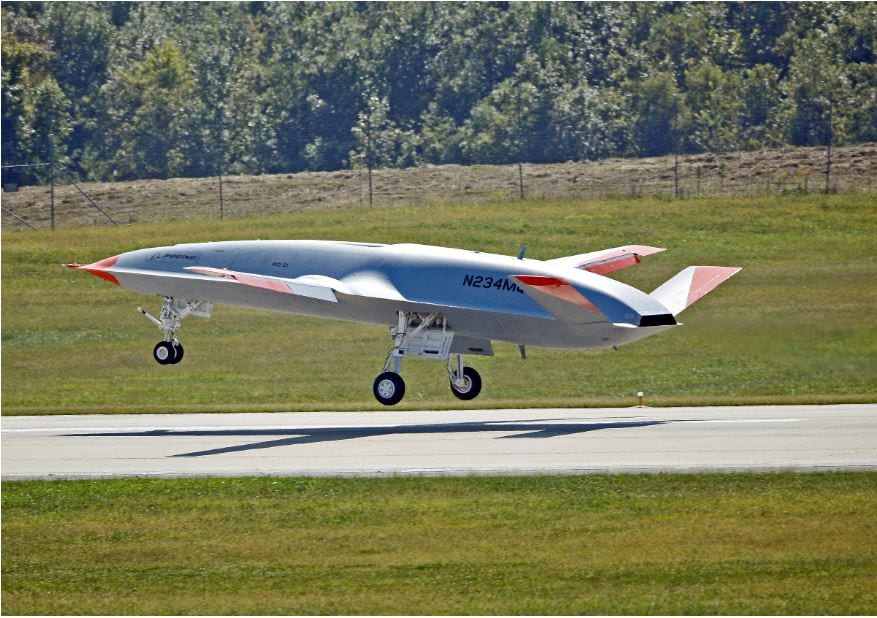
Boeing and the U.S. Navy conduct the first test flight of the MQ-25 unmanned aerial refueler test asset, T-1 on Sept. 19, 2019. (Boeing)
The Chief of Naval Operations (CNO) directed the establishment of the first MQ-25A carrier aerial refueling unmanned aerial vehicle (UAV) squadron to occur next year, ahead of initial vehicle deliveries.
This squadron, Unmanned Carrier Launched Multi-Role Squadron -10 (VUQ-10), is set to be established by Oct. 1, 2021.
According to an internal OPNAV notice dated Aug. 20, VUQ-10 will be based at Naval Base Ventura County, Calif., and will support the program of record timeline, milestones, and operational requirements "to support timely delivery of MQ-25A air vehicle operators to the fleet."
The pre-establishment date is set for FY 2022, which begins in October 2021. The notice said this pre-establishment date is needed to allow personnel time to attain advanced qualification before aircraft delivery.
Connectivity
ZipAir to Install Panasonic Avionics IFC on Boeing 787s
Japanese Airlines (JAL) subsidiary ZipAir is adding in-flight connectivity (IFC) supplied by Panasonic Avionics to its fleet of Boeing 787s, according to an Oct. 8 press release.
ZipAir, launched in 2018, describes itself as a low cost carrier that is looking to define the "New Basic Airline," and currently operates two 787s transferred from JAL. According to Panasonic, the Tokyo-based carrier's IFC will be enabled by a "new satellite modem featuring bandwidth up to 20 times greater than previously available."
"By making the most of in-flight Wi-Fi services provided by Panasonic Avionics, we hope to become an airline that gives customers the freedom to spend time on the plane in their own personal way and that makes flight time feel short," said Shingo Nishida, president of ZipAir.
AeroVironment Completes Stratospheric Test Flight with Sunglider Solar HAPS
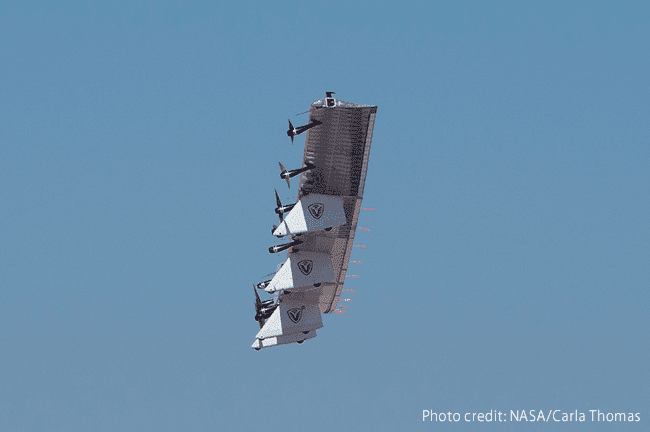
AeroVironment completed a 20-hour test flight of the Sunglider solar-powered high-altitude pseudo-satellite (HAPS) at stratospheric altitude while maintaining broadband mobile communication. (HAPS Mobile)
AeroVironment, an aerospace and defense company, completed a 20-hour test flight of the Sunglider solar-powered high-altitude pseudo-satellite (HAPS) at stratospheric altitude while maintaining broadband mobile communication, according to an Oct. 8 press release.
The test flight took place 62,500 feet above Spaceport America in New Mexico on Sept. 21. Teams in Tokyo, Spaceport America, and Silicon valley were successfully linked by broadband communications using an LTE payload developed by Alphabet's Loon lLC and HAPSMobile, who funds the development and testing of Sunglider, during the flight.
"In less than three years AeroVironment and HAPSMobile have made incredible progress, developing two Sunglider solar HAPS unmanned aircraft and performing five consecutive flight demonstrations, culminating in this latest significant milestone," Wahid Nawabi, president and chief executive officer of AeroVironment, said in the release. "Reaching stratospheric altitude, maintaining continuous flight for more than 20 hours, achieving key test objectives and demonstrating seamless broadband communication illustrate the tremendous potential HAPS technology offers to expand connectivity globally.
The Sunglider was also able to successfully test propulsion, power systems, flight control, navigation, and datalink integrity during the flight.
Unmanned
DOJ Changes Foreign-UAS Policy
The Department of Justice (DOJ) announced two new policy revisions on foreign-made unmanned aircraft systems (UAS) from the Office of Justice Programs (OJP), according to an Oct. 8 press release. The new policy guidelines focus on public safety and security concerns.
The revised policy addresses cybersecurity and data privacy by blocking foreign governments who the DOJ has identified as "vulnerable to extrajudicial direction" from providing funds to purchase or operate UAS, according to the release.
"This policy change helps ensure that our partners can use these valuable tools to support their law enforcement and public safety missions, without compromising information technology systems or sensitive law enforcement or privacy information," OJP Principal Deputy Assistant Attorney General Katharine T. Sullivan said in a statement.
The OJP is also requiring the chief executive officer of the applicant's jurisdiction who requests funds for UAS to certify in writing that they will be responsible for risks posed by malware, improper data collection, or electronic hacking. They must also certify that they will secure communications and data collected by the UAS.
"We take seriously concerns about the use of foreign-made UAS and the potential for related data compromise," Deputy Attorney General Jeffrey A. Rosen said in the release. "It is paramount that funding recipients take effective measures to safeguard sensitive information and the public's privacy and civil liberties while operating these systems in a safe and secure manner."
